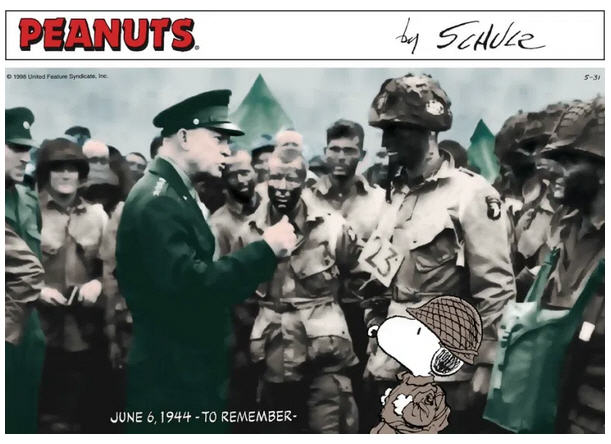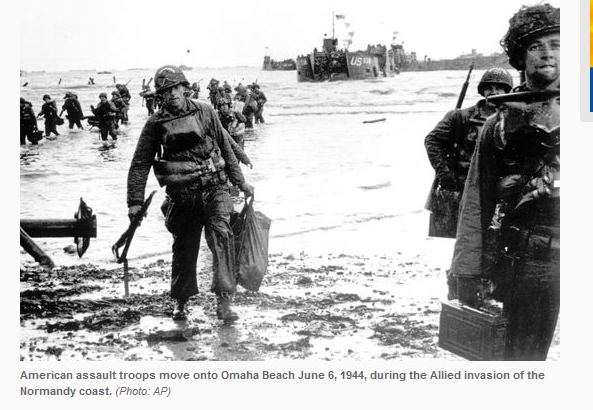A number of years ago, my husband and I had the pleasure of touring the Charles M. Schultz museum in Santa Rosa, California. We had lunch at the Warm Puppy Cafe and watched the ice skaters through the glass. One of my cousin’s children shared childhood memories of “Charlie” who hung around the ice skating rink to see how the children were doing. “Charlie” of course was Charles M. Schultz who built the rink and supported the children’s skating programs. While we were there, we heard the story of why the Peanuts cartoon recognizes the soldiers who landed on the beaches on D-Day.
Charles M. Schultz was drafted during World War II. He trained with one of the units that eventually stormed the beaches of Normandy. Because of an illness in his family, he was sent home before he completed his training, and when he returned, trained with a different unit. The first unit he trained with had heavy casualties when the hit the beach at Normandy. That is the reason Peanuts salutes D-Day every year.
In 2019, The Washington Post reported:
He also went to Normandy, France, in a national call for remembrance and unity. And there, he became part of D-Day’s pop-culture legacy, one that has shaped Americans’ understanding of the invasion, and indeed, World War II, for decades.
…On June 6, 1993, Schulz drew a comic strip that had little visual relationship to anything that had previously appeared in “Peanuts.” In three grim panels, the cartoonist depicted the eerie silence at the outset of the D-Day invasion. One panel looked atop the beachhead at the Nazi bunkers, where hidden soldiers were ready to fire down on the Allied troops below. The next panel surveyed a Higgins boat carrying a crew of faceless soldiers to a murky landing site. And the final panel revealed Snoopy dressed as a G.I. crawling up onto the beach at low tide. The lone words on the page read: “June 6, 1944, To Remember.”
…In the following years, Schulz’s tributes became more formalized, simply showing Snoopy wading ashore at the rugged beach over the invocation “To Remember.” Despite the simplicity, it was a meaningful statement to some readers. Robert A. Nottke, a World War II veteran, wrote to the Chicago Tribune to complain that he could not find a single reference to D-Day on June 6, 1996, “with one exception.” It was “Snoopy, our beloved beagle, bravely dog-paddling toward Normandy Beach.” Nottke, and undoubtedly other readers, “felt affronted by [the] oversight.” For those who had served and their loved ones, who felt like the sacrifices of that day and month had been forgotten over time, Schulz’s strip was salve on the wound.
This is one of Charles M. Schultz’s cartoons saluting those who landed on the beaches of France on June 6, 1944:
We remember.


